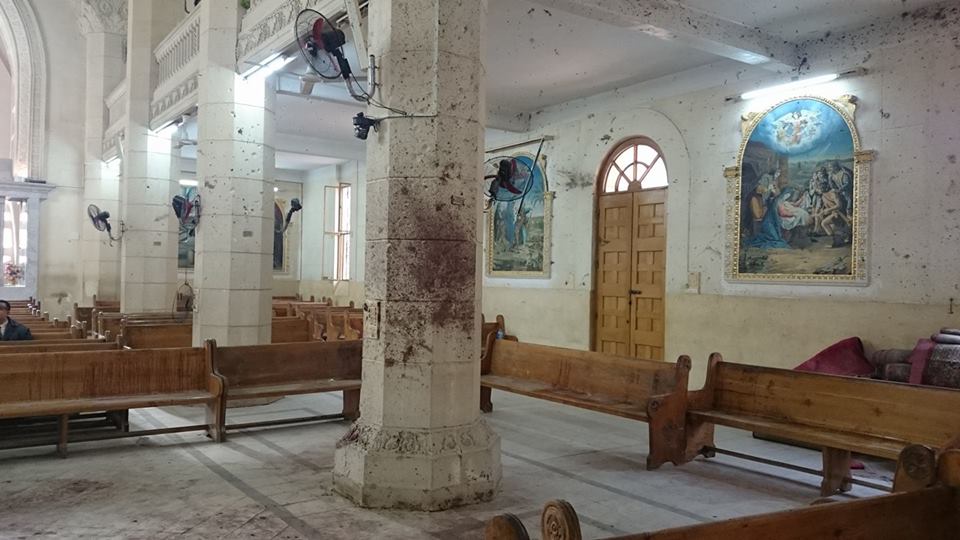
A Coptic cathedral has been restored and reopened eight months after a suicide bombing there on Palm Sunday killed 28 and injured 74 others.
St. George’s Cathedral in Tanta, the capital of the Gharbia governorate north of Cairo, has been renamed the Cathedral of St. George and the Martyrs, and its blood-splattered pillars have been left untouched as a reminder of what happened.
The cathedral was one of two hit on the same day by suicide bombers targeting Copts celebrating Palm Sunday. Between the two churches – the other was in Alexandria, 130km northwest of Tanta – 46 people were killed and over 100 injured.
“Everyone is amazed to see the church rise from the ashes, and the ruins metamorphose into a lofty, exceptionally beautiful building,” the local bishop, Anba Pola, told DMC TV. “Screams of horror at the martyrs’ spilt blood have now turned into joyful ululations.”
Meanwhile, a year since a law was introduced to help churches acquire licenses, nearly 4,000 churches have applied – 2,600 Coptic, 1,020 Protestant and 110 Catholic.
Coptic priest Mikhail Antoun said churches were now “waiting for final inspections and structural safety reports”, while a lawyer representing the Catholic Church said the first licenses could come through within two months.
But Nabil Naguib, media representative of the Evangelical Church in Egypt, cautioned: “With close to 3,800 churches awaiting legalisation, it’s bound to be a long process.”
For decades the construction and renovation of churches has been obstructed by complex bureaucracy, resulting in the deterioration of church buildings and a shortage of places of worship for Christians.